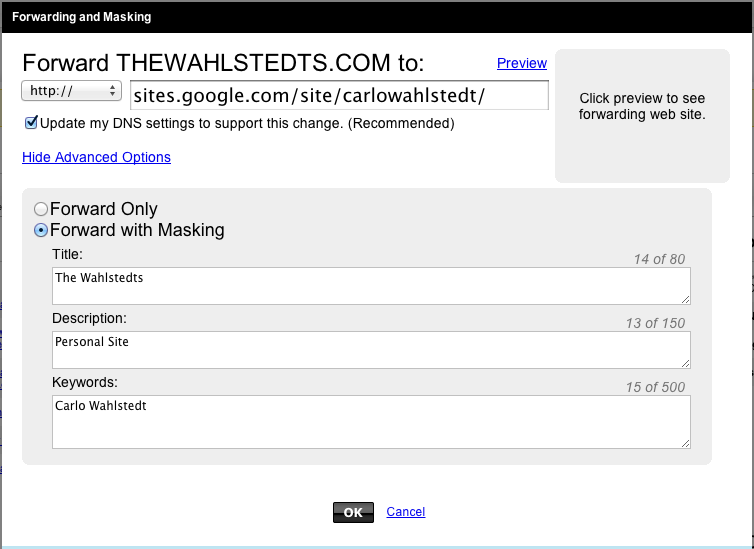Setting up your own blog
There are plenty of services out there for creating your own blog. Tumblr and WordPress to name a few. I choose to use blogger (which should be evident by looking at my blog but then again, not everyone realizes the simple technical things). Not really why I chose blogger initially but I use it now because it integrates so well with my google account. It makes it super easy to sign in and they have a mobile app, if you're into that kinda thing.You can see that it have a pretty nice interface. It gives you stats (mine aren't very impressive) and other neat things. You can even make money if people actually read your blog. I'm not going to walk you through setting it up or anything fancy like that, as you should be able to walk through it or google questions. If you have specific questions feel free to leave one.
Setting up your own website
There are tools out there to setup your own site that are all similar to the old geocities days. Web hosts like 1&1 have tools to build a site. I'm sure there are other places that help you generate a website but once again I default to using Google because it's easy. My site is powered by Google Sites. There are a number of templates out there and you can even build your own.Getting a domain name (URL) pointed to that blog or website
Finally the part that is probably the most difficult from a technical standpoint. I'm using GoDaddy as my Domain Name Registrar, so this is what the example will cover. However, I was recently recommended NameCheap but have not used them. There are a host of other places that will do this same service for you so feel free to look around. They SHOULD all have this same ability as well.Domain name forwarding is the feature you'll want. Here's how to set it up in GoDaddy. After you log into your account there should be a listing of all of your domains (note GoDaddy's site seems to change regularly). Click the launch button.
Once opened up find the forward button and select Forward Domain.
Finally a popup will show what site to forward to and a few other options. Input your site url here and I choose Forward with Masking so that when the site is first opened they can't even tell it's not being directly hosted. Either way, it really won't matter as it will accomplish the same thing, getting the user to your site. Save that and you're done. It can take a while for these changes to take effect so don't be surprised if it doesn't work right away. Come back in a few hours and it's sure to have started working.
That's all there is to setting up your own blog/website with a custom URL. What are waiting for now? Go search for a good domain name and get started.



